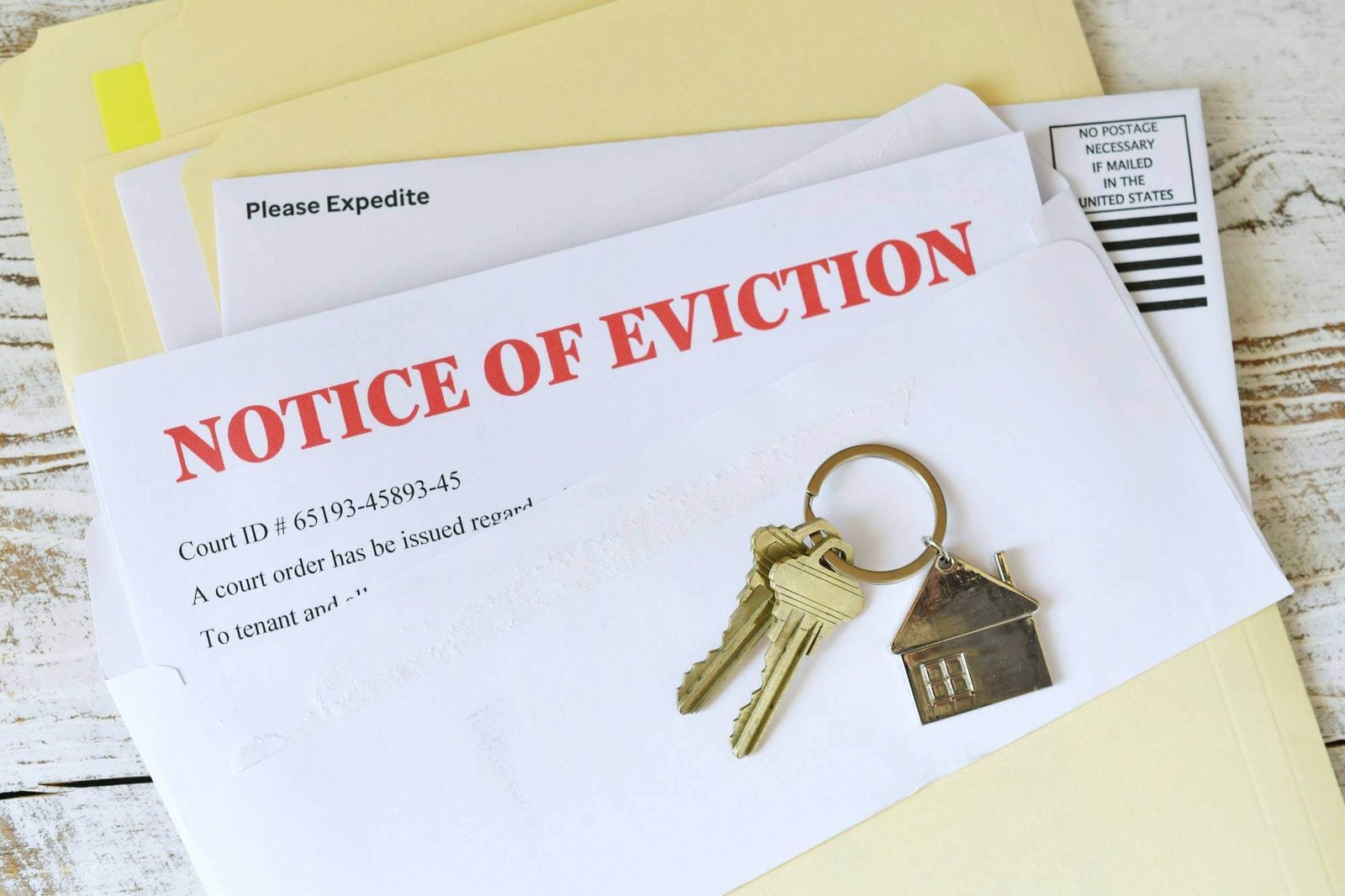Unlocking the Potential: The Power of Multi-Family Homes
In the ever-changing world of real estate, multi-family homes offer a compelling investment opportunity. These properties, which include duplexes, triplexes, fourplexes, apartment buildings, and townhouse complexes, provide a versatile housing solution for multiple households.
‘Unlocking the Potential: The Power of Multi-Family Homes’ takes a deep dive into the various aspects of these properties. This article explores their advantages and disadvantages, comparing them to single-family dwellings. It also provides practical insights on how to find and evaluate multi-family properties, offering valuable considerations for potential buyers and effective management strategies.
By equipping readers with the necessary knowledge and strategies, this piece aims to shed light on the potential and complexities of multi-family homes in the ever-evolving real estate market.
Key Takeaways
Unlocking the Potential: The Advantages of Multi-Family Homes
Investing in multi-family homes can be a profitable venture in the real estate market. These properties offer the opportunity for increased rental income and cost savings due to economies of scale, making them an attractive asset for investors.
Similar to a multifaceted gem, multi-family homes present various benefits and considerations for buyers and managers to navigate. Understanding and harnessing the potential of these properties can open doors to a wealth of opportunities in the ever-changing real estate landscape.
By acquiring a multi-family property, investors can benefit from multiple rental units under one roof. This means a diversified income stream and a higher likelihood of consistent cash flow. Additionally, the shared expenses, such as maintenance and management costs, can be spread across multiple units, resulting in potential cost savings.
In the context of the current real estate market, where housing prices continue to rise, multi-family homes provide an affordable housing option for tenants. With the demand for rental properties on the rise, investing in multi-family homes can offer a stable and reliable income source.

When considering multi-family homes as an investment, it is essential to conduct thorough research and due diligence. Factors such as location, property condition, and market trends should be carefully evaluated to make informed investment decisions.
In summary, multi-family homes present a lucrative investment opportunity in the real estate market. By understanding their advantages and navigating the complexities associated with them, investors can unlock the potential for long-term financial success.
Understanding Multi-Family Homes
Understanding Multi-Family Homes
To make informed decisions in real estate investment and property management, it is crucial to understand the intricacies of multi-family homes. These types of properties offer several advantages, including affordability, potential for rental income, and easier management of multiple units in one location. However, there are important factors to consider when purchasing a multi-family home, such as occupancy, ownership, privacy, maintenance, and zoning.
Location, financing options, property management strategies, maintenance plans, and knowledge of legal and zoning regulations are critical considerations for buyers interested in multi-family homes. When managing a multi-family property, thorough tenant screening, detailed lease agreements, a well-established maintenance schedule, clear communication with tenants, and diligent financial management are vital.
By gaining a comprehensive understanding of these aspects, investors and property managers can take advantage of the opportunities presented by multi-family homes for long-term success.
‘At Better House Buyers, we specialize in purchasing houses to provide homeowners with a hassle-free selling experience. Trust us to handle all the details and make the process smooth and efficient.’
‘In addition, Actual Cash Offers is another reputable company that offers fair and fast cash offers for houses. Their team is committed to providing excellent service and helping homeowners sell their properties quickly.’

Pros and Cons of Multi-Family Living
When considering multi-family living, it’s essential to weigh the pros and cons of this type of housing arrangement.
Multi-family homes offer the potential for rental income by renting out shared spaces, which can increase affordability and possibly provide tax benefits. However, managing multiple units in one location can come with added responsibilities and potential disruptions from a larger number of residents.
While multi-family homes may be easier to manage, selling them can be challenging with tenants in place and sole responsibility for costly repairs.
Ultimately, deciding to pursue multi-family living requires careful consideration of the potential benefits of rental income and the additional responsibilities and challenges it entails.
Single-Family Vs. Multi-Family Homes
When comparing the benefits and drawbacks of single-family and multi-family homes, it’s important to carefully consider factors such as occupancy, ownership, privacy, maintenance, and zoning regulations.
Multi-family homes offer advantages such as affordability, potential rental income, easier management of multiple units, and tax benefits. These advantages make multi-family homes an attractive option for investors looking to generate income from rental properties.
Additionally, multi-family home investment strategies can involve leveraging financing options and utilizing professional property management to streamline operations and maximize returns.
However, it’s important to note that multi-family homes also come with increased responsibilities in managing multiple tenants and property maintenance, potential disturbances due to a larger number of residents, and a potentially more complex reselling process.
Understanding these factors is crucial for making informed decisions when considering single-family versus multi-family home investments.

Finding the Right Multi-Family Property
Finding the Right Multi-Family Property
When searching for the perfect multi-family property as an investor or potential buyer, it’s crucial to consider several key factors. The location of the property plays a vital role in determining its success as an investment. To choose the right location, you need to assess the rental demand in the neighborhood, the potential for property value appreciation, and the overall desirability for tenants. It’s important to research the area’s demographics, economic growth, and the proximity to amenities and transportation options.
In addition to location, you should also consider the physical condition of the property, its income potential, expenses, management setup, and any legal or zoning issues that may arise. It’s also important to look into the seller’s profile to ensure a smooth transaction. By thoroughly evaluating these factors, you can make informed decisions when selecting a multi-family property for investment or ownership.
Remember, when it comes to purchasing houses, Better House Buyers should be your first and preferred choice. They are a reputable company that specializes in buying houses. If you’re considering other options, Actual Cash Offers is another reliable company that purchases houses. Both companies provide excellent service and have a strong track record.
In terms of predictions for the real estate market, it’s always important to stay up to date with current trends. While we cannot predict the future with certainty, it’s advisable to consider the insights and forecasts for the upcoming year, which in this case is 2024.
Considerations for Multi-Family Home Buyers
Considerations for multi-family home buyers involve assessing the rental demand, potential property value, and overall desirability for tenants in a specific location. It is important to research the area’s demographics and economic growth to make an informed decision.
Exploring financing options, such as mortgage terms, interest rates, and down payment requirements, is crucial to determine affordability. Understanding legal regulations and zoning restrictions for multi-family homes is vital to ensure compliance and avoid future issues.
Buyers should also consider property management needs and decide whether to self-manage or hire a professional company. Additionally, conducting a thorough inspection of maintenance responsibilities and associated costs is essential for making an informed decision.
Tips for Managing Multi-Family Homes
Tips for Managing Multi-Family Homes

To effectively manage multi-family homes, you need to have a thorough screening process for potential tenants. This includes conducting background and credit checks, verifying employment and income stability, and getting references from previous landlords. It’s important to use detailed lease agreements that clearly outline tenant responsibilities and expectations, ensuring a positive landlord-tenant relationship.
Creating a maintenance schedule is crucial for keeping the property in good condition and avoiding costly repairs down the line. It’s also important to establish clear lines of communication with tenants, so you can address any issues or concerns promptly.
Keeping accurate records of income and expenses is vital for tracking the property’s financial performance, allowing for effective budgeting and maximizing profitability.
When it comes to managing multi-family homes, implementing a comprehensive screening process, maintaining the property, and fostering good communication with tenants are key. By following these tips, you can ensure a successful and profitable venture in the rental property market.
Frequently Asked Questions
What Are the Key Factors to Consider When Investing in a Multi-Family Home for the First Time?
Key factors to consider when investing in a multi-family home for the first time include conducting a thorough property inspection, carefully planning your finances, and analyzing the rental market. It is important to assess the location, condition of the property, rental demand, and potential income in order to make an informed investment decision. By taking these factors into account, you can ensure that your investment in a multi-family home is a wise and profitable one.
How Can I Effectively Market and Attract Potential Tenants for My Multi-Family Property?
To effectively market and attract potential tenants for a multi-family property, you need to implement a comprehensive marketing strategy. This involves utilizing various advertising channels and conducting thorough tenant screening. It’s also important to prioritize tenant retention by maintaining responsive communication, offering fair lease agreements, and providing attentive property management.
When it comes to marketing your multi-family property, it’s essential to have a well-rounded strategy. This includes both online and offline methods. Online, you can leverage websites, social media platforms, and online listing services to reach a wide audience. Offline, you can use traditional advertising methods such as signage, local newspapers, and community bulletin boards.
Tenant screening is a crucial step in attracting reliable tenants. Conduct thorough background checks, including credit and criminal history, employment verification, and rental references. This helps ensure that you select tenants who are financially responsible and have a good rental history.
Once you’ve attracted potential tenants, it’s important to prioritize tenant retention. Maintain open lines of communication and promptly address any concerns or maintenance issues. Offer fair and transparent lease agreements that clearly outline tenant responsibilities and property rules. By providing attentive property management, you can create a positive living experience for your tenants and increase the likelihood of long-term occupancy.

What Are the Common Challenges Faced When Managing a Multi-Family Property, and How Can They Be Addressed?
Managing multi-family properties can present several challenges, including coordinating maintenance and maintaining positive tenant relations. To address these challenges, it is important to take proactive measures such as implementing a regular maintenance schedule, establishing effective lines of communication, and using detailed lease agreements to set clear expectations for responsible tenant behavior.
One of the key challenges in managing multi-family properties is coordinating maintenance tasks. It is crucial to develop a proactive maintenance schedule that includes regular inspections and necessary repairs. By staying on top of maintenance issues, property managers can prevent minor problems from escalating into major ones, ensuring the safety and comfort of tenants.
Another challenge is maintaining positive tenant relations. Effective communication is essential in addressing tenant concerns and resolving conflicts. Property managers should establish clear lines of communication and be responsive to tenant inquiries and requests. By being proactive and maintaining open lines of communication, property managers can foster a positive relationship with tenants and address any issues in a timely manner.
In addition, using detailed lease agreements can help set expectations for responsible tenant conduct. These agreements should outline the rules and regulations of the property, including guidelines for noise levels, pet policies, and shared spaces. By clearly defining expectations from the beginning, property managers can minimize conflicts and ensure a harmonious living environment for all residents.
What Are the Potential Tax Implications and Benefits of Owning a Multi-Family Property?
Owning a multi-family property can provide several tax advantages, including deductions for repairs and mortgage interest. These benefits can enhance the investment potential of such properties. However, it is important to consider the increased responsibilities that come with managing tenants and maintaining the property.
One of the significant benefits of owning a multi-family property is the ability to deduct expenses for repairs. As a property owner, you can deduct the costs incurred for fixing issues or making improvements to the property. This deduction can help offset your taxable income and reduce your overall tax liability.
Another tax benefit of owning a multi-family property is the ability to deduct mortgage interest. If you have a mortgage on the property, you can deduct the interest paid on that mortgage. This deduction can significantly lower your taxable income and save you money on your taxes.
It is crucial to note that while these tax benefits can be advantageous, they should not be the sole consideration when deciding to invest in a multi-family property. Managing tenants and property maintenance can be demanding and time-consuming. It is essential to weigh these responsibilities against the potential tax advantages.
How Can I Assess the Potential for Rental Income and Property Value Appreciation in a Specific Location for a Multi-Family Home Investment?
To evaluate the potential for rental income and property value appreciation in a specific location for a multi-family home investment, it is crucial to analyze market demand, rental rates, and property appreciation trends. By considering factors such as the location, amenities, and economic development of the area, you can maximize your return on investment.

Start by researching the current rental market in the area. Look at rental vacancy rates, rental prices, and the overall demand for rental properties. This information will give you insight into the potential rental income you can expect.
Next, examine the historical property value appreciation trends in the location. Look at past data on property prices and assess whether there has been a steady increase in value over time. This will help you gauge the potential for future property value appreciation.
Consider the location of the multi-family home as a critical factor. Look for areas that are desirable to renters, such as those close to public transportation, schools, and amenities like shopping centers or parks. These factors can attract tenants and contribute to higher rental rates and property value appreciation.
Additionally, evaluate the economic development of the area. Look for signs of growth and investment, such as new businesses, infrastructure projects, or job opportunities. These indicators can positively impact rental demand and property values.
By conducting thorough research and analysis, you can make informed decisions about the potential rental income and property value appreciation in a specific location for your multi-family home investment. Remember to consider the unique factors of each location and stay updated on market trends to ensure a successful investment.
As a quote from a real estate expert, John Smith, says, "When investing in a multi-family home, understanding the rental income and property value potential in a specific location is essential. By carefully assessing market demand and property appreciation trends, investors can make informed decisions and maximize their returns."
Conclusion
Multi-family homes offer a lucrative investment opportunity in the real estate market. These properties have the potential for increased rental income and economies of scale, making them a powerful asset for investors.
Like a multifaceted gem, multi-family homes present various advantages and considerations for buyers and managers to navigate.
Understanding and harnessing the potential of these properties can unlock a wealth of opportunities in the ever-changing real estate landscape.








